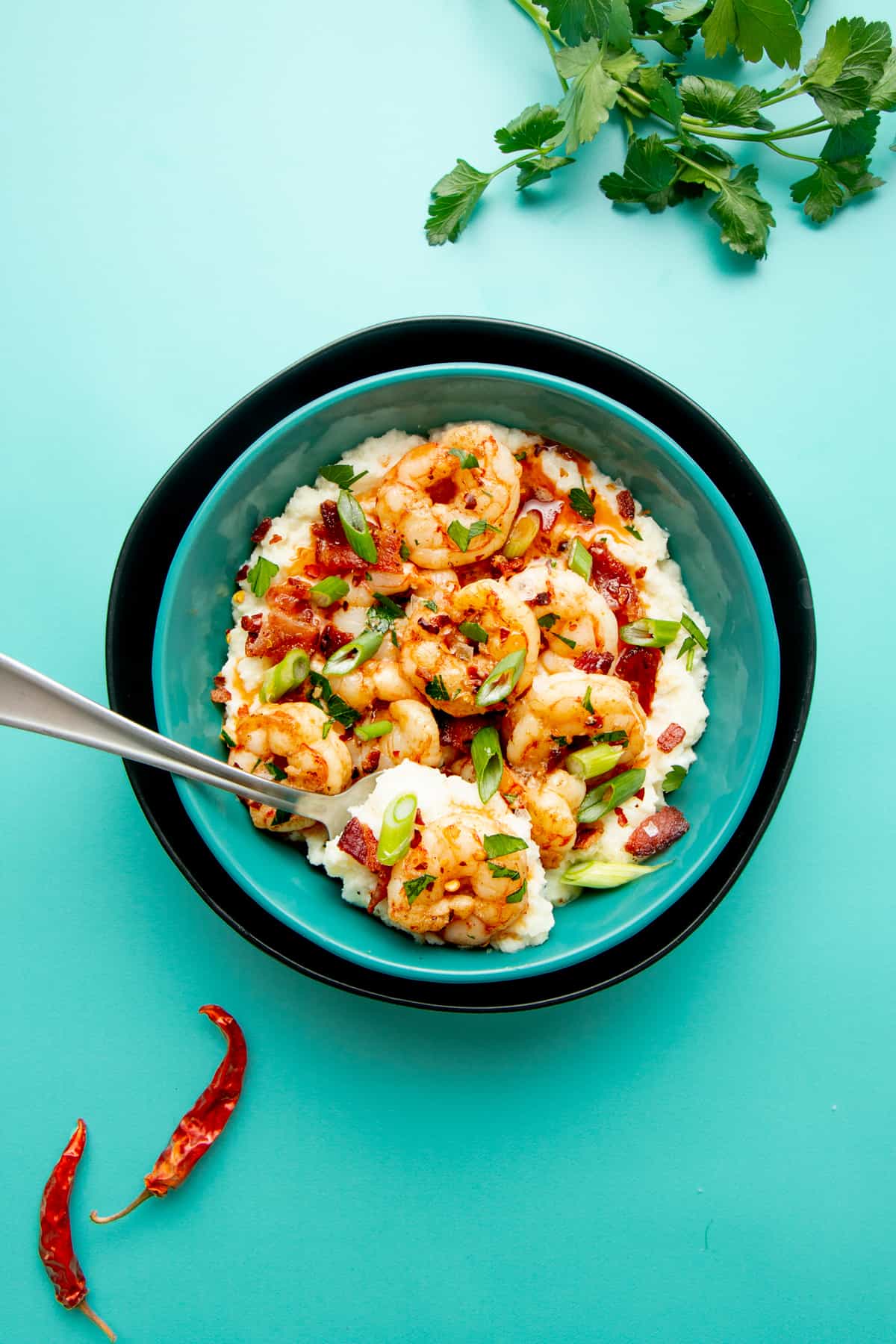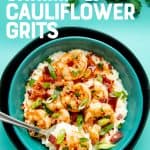If you haven’t spent a lot of time eating Southern comfort foods, Shrimp and Grits might be a new concept to you—but you need to have this classic dish in your life!
Imagine perfectly cooked garlic shrimp over top of creamy, hearty grits, topped with crisp bacon, fresh green onions, and a delectable lemon sauce. It’s easy, it’s fast (we’re talking dinner on the table in less than 20 minutes), and it can easily be made gluten-free, paleo, and Whole30-friendly thanks to our recipe for Cauliflower Grits!
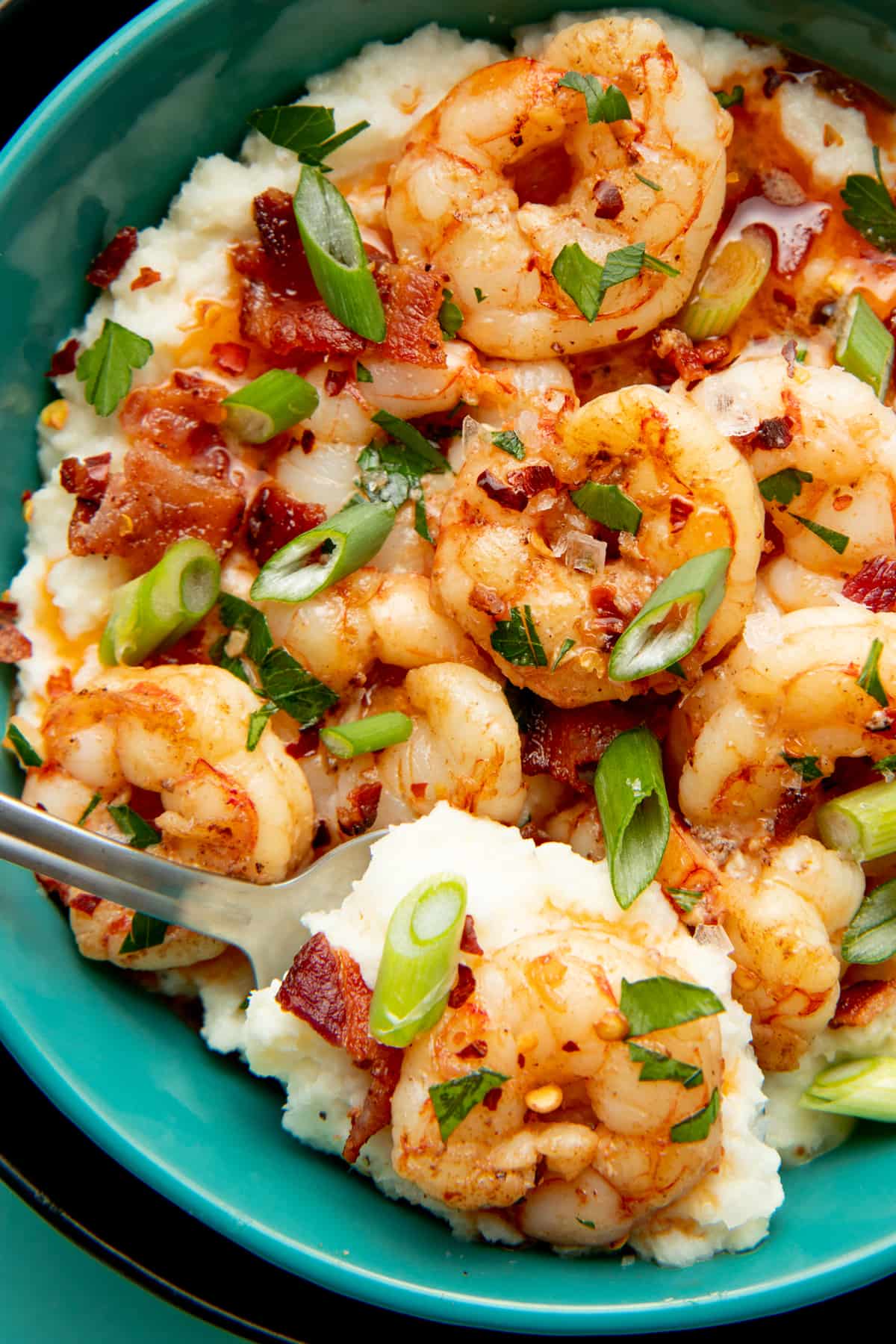
Traditional grits are made with cornmeal (AKA: polenta), and produce a thick, creamy hot cereal that is perfect for eating with butter and brown sugar for an oatmeal substitute. Or, you can load it up with butter, cheese, and other add-ins to make it the perfect base for a savory meal. But what if you are allergic or intolerant to corn? No worries! Our recipe for Cauliflower Grits is so close to the real thing, you’ll never miss corn again. It’s creamy, thick, and the perfect vessel for shrimp.
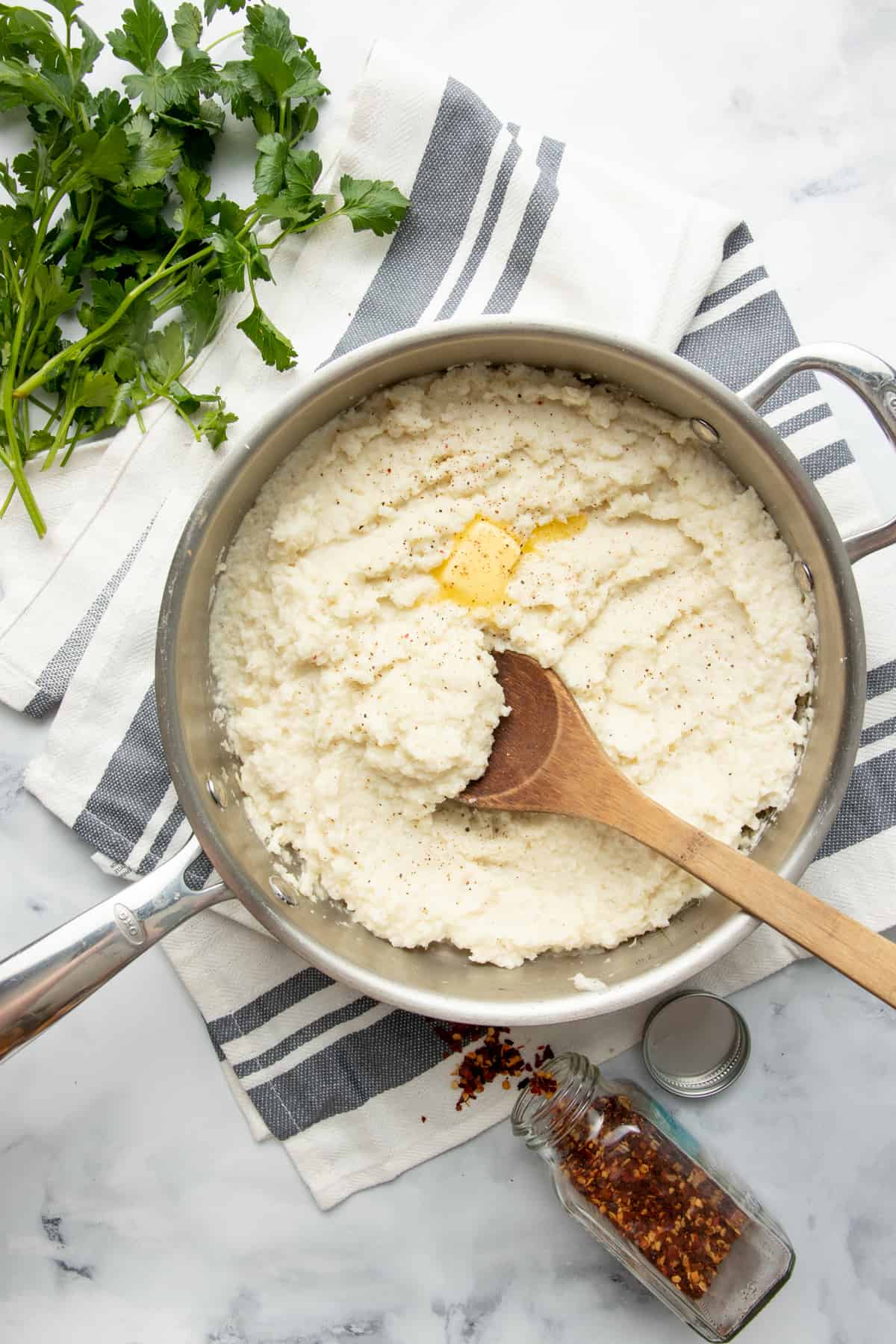
What kind of shrimp should I use for shrimp and grits?
Any kind of raw shrimp will do the trick here, but we prefer to look for medium or large size shrimp. To make it easier, you can grab shrimp that has already been shelled, deveined, and had the tail removed. If eating sustainable seafood is important to you, make sure to check out the Seafood Watch website for more information on sustainable shrimp, or you can purchase from a reputable source like the seafood boxes at Thrive Market.
Can I use frozen shrimp?
Sure can! In fact, I always keep frozen shrimp in my freezer so I can make shrimp and grits on the fly. Frozen shrimp defrosts in 15-20 minutes in a bowl of cold water. Just drain well and pat dry before sautéeing.
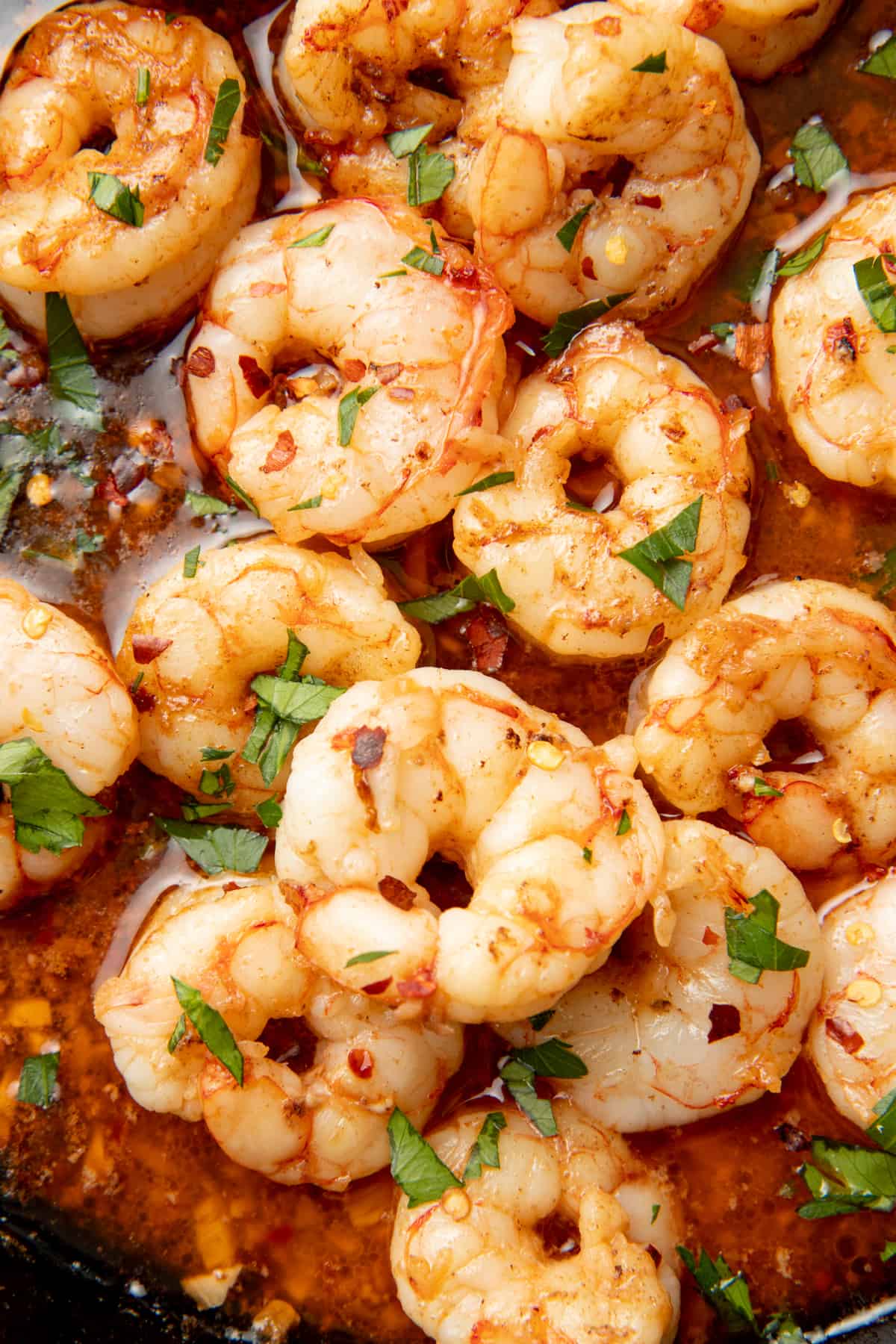
How do I make the cauliflower grits?
Making cauliflower grits is a lot like making cauliflower rice, but with one added step: blitzing it with an immersion blender once it is cooked through!
You can use frozen riced cauliflower, or pulse a head of fresh cauliflower in a food processor. Honestly, frozen riced cauliflower is a shortcut that I’m happy to make. Most big supermarkets carry it in their frozen veggie section now, and I get perfect results every time I cook it. I’ve still been able to make good cauliflower rice from fresh cauliflower, but it takes more effort, and the end result isn’t quite as fluffy and rice-like.
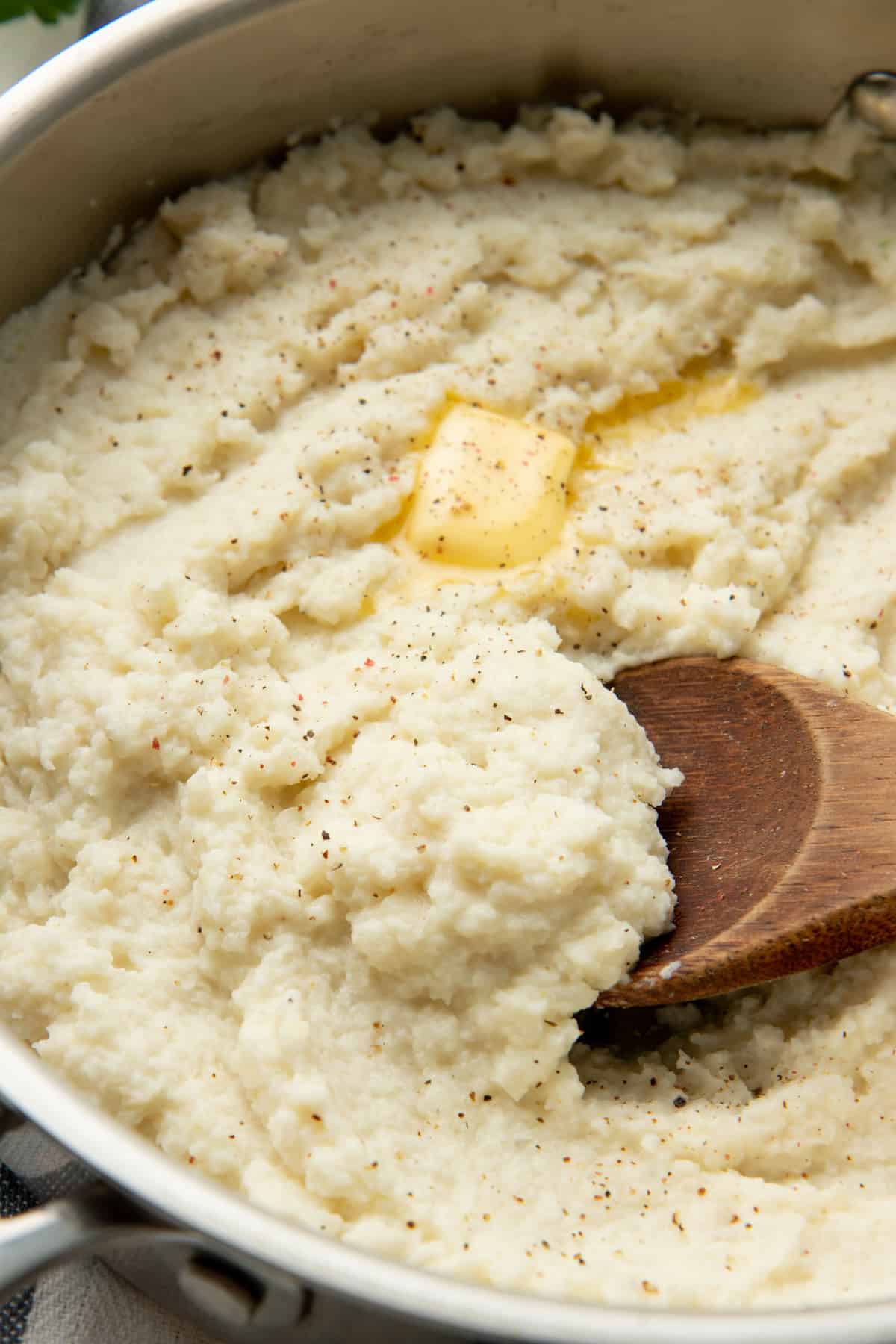
Once you have your riced cauliflower, whether frozen or fresh, you can cook it with coconut milk and some sautéed garlic until tender. Then just use an immersion blender to smooth it out, and BOOM—cauliflower grits!
What kind of sauce is used on shrimp and grits?
To bring the dish together, an incredibly simple pan sauce is made from bacon drippings, garlic, and fresh lemon juice. This bright and rich sauce is then drizzled over the shrimp and grits to add tons of flavor!
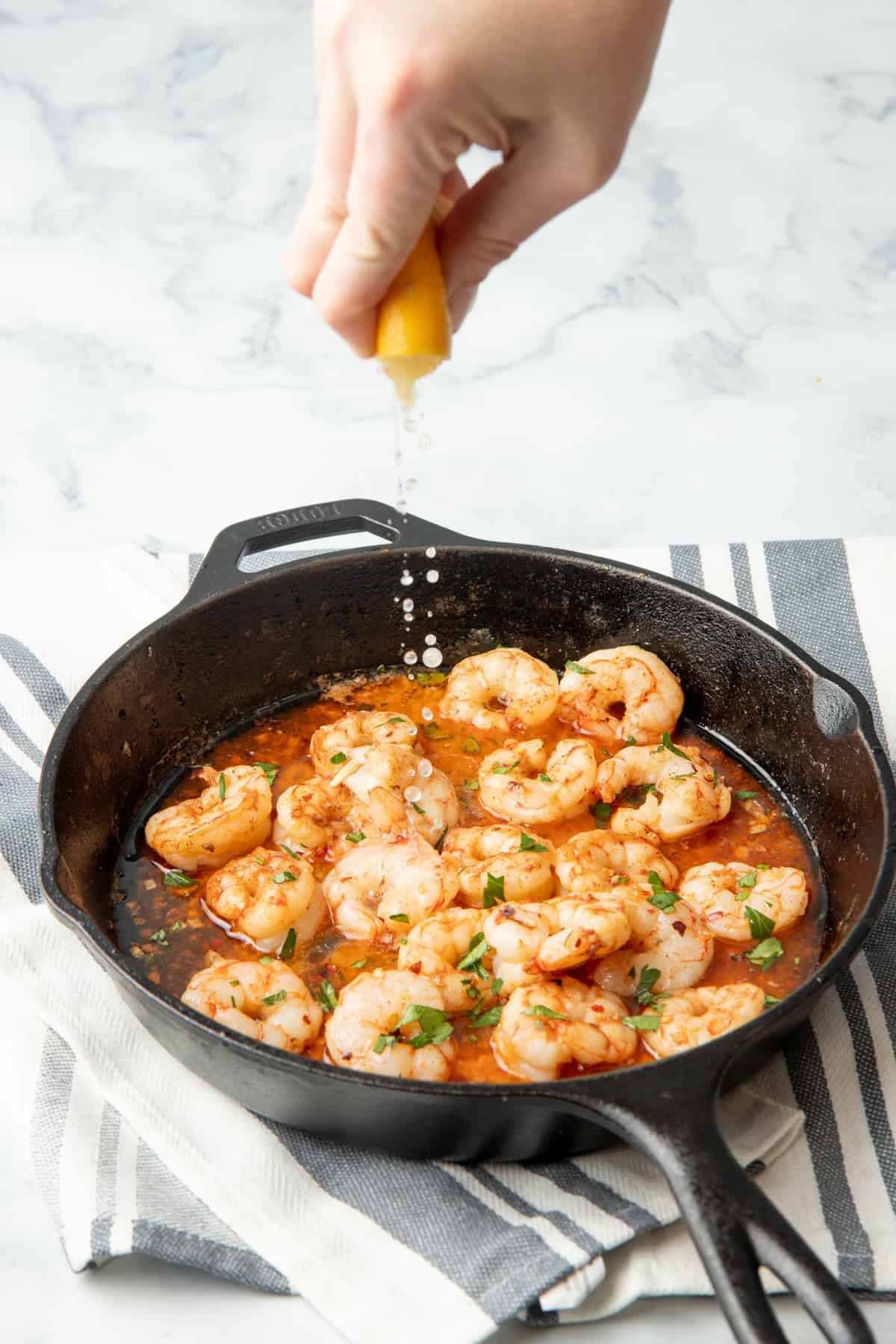
What should I serve with these shrimp and grits?
Shrimp and grits is really a meal all on its own! But if you want to add something on the side, a crisp green salad would add something fresh to the meal.
Can I meal prep this recipe?
Reheating shrimp can be tricky, so we don’t recommend meal prepping this recipe. If you’d like to work ahead, the Cauliflower Grits can be made to completion on their own and reheated before serving.
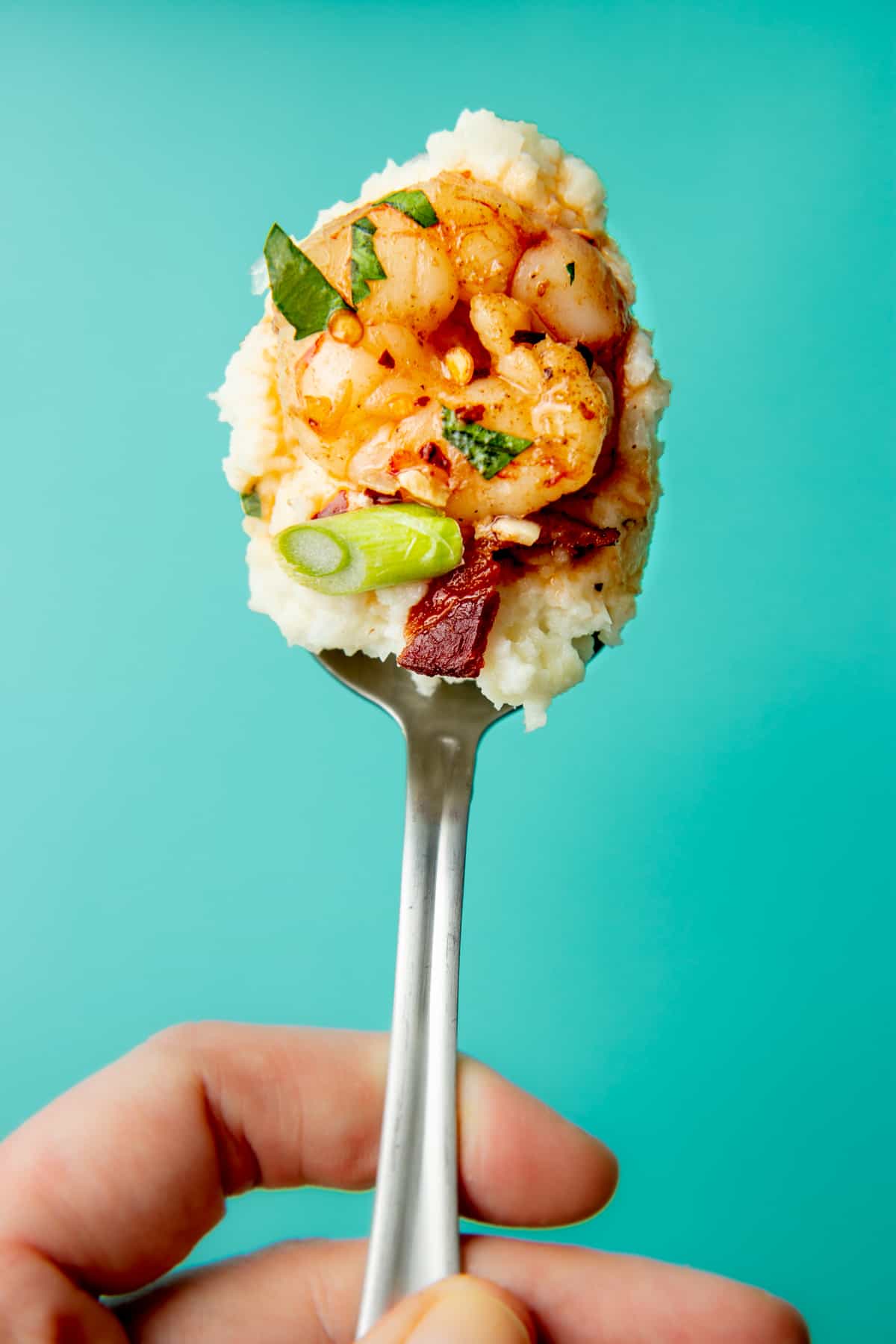
How do I make these shrimp and grits paleo, Whole30-friendly, or dairy-free?
Butter adds a nice amount of richness to the grits, but if you’re avoiding dairy, it can easily be substituted for either oil or a non-dairy butter substitute. When eating a paleo or Whole30 diet, it’s also important to look for compliant, sugar-free bacon.
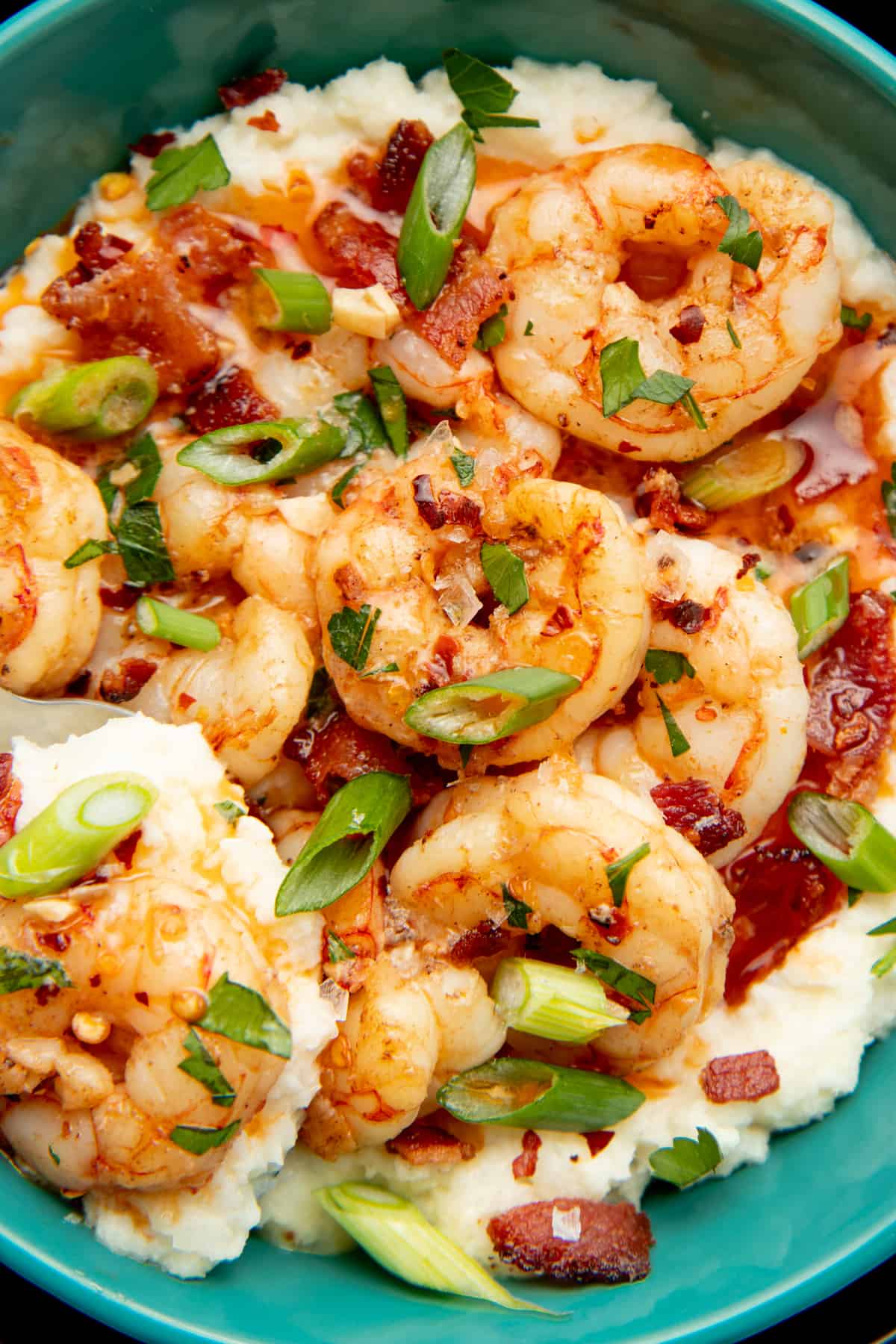
Our protips for amazing Paleo Shrimp and Cauliflower Grits:
- Don’t overcook the shrimp! Overcooking is a cardinal sin of cooking with seafood. Shrimp cooks in a flash—one to two minutes per side—and you’ll know it’s done when the shrimp looks opaque. Any longer than that, and your buttery, tender shrimp can turn rubbery.
- Save some time with frozen riced cauliflower. You can absolutely make this with fresh cauliflower, but frozen riced cauliflower is available in most major supermarkets nowadays, and it makes this recipe so much faster and easier!
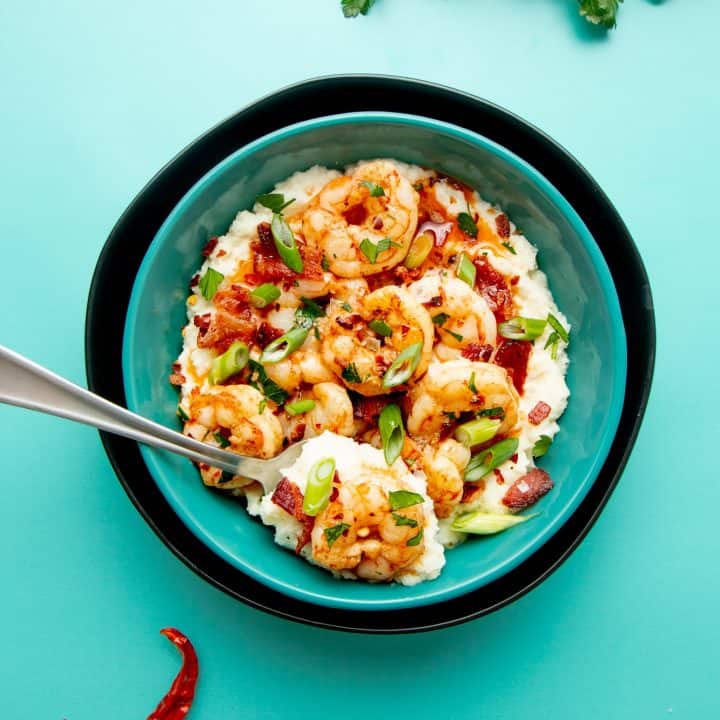
Shrimp and Cauliflower Grits Recipe
Shrimp and Cauliflower Grits are a speedy weeknight meal that is sure to satisfy! It's paleo, Whole30-friendly, gluten-free, dairy-free, and grain-free.
Ingredients
For the Cauliflower Grits
- 1/4 cup butter or oil
- 2 cloves garlic, minced
- 2 12-ounce bags frozen riced cauliflower
- 1/2 cup full-fat coconut milk (from the can)
- 1/2 teaspoon salt, plus more to taste
- 1/2 teaspoon black pepper
For the Shrimp
- 2 strips thick-cut bacon
- 2 tablespoons butter or oil
- 2 cloves garlic, minced
- Pinch of red pepper flakes
- 1 pound peeled and deveined raw shrimp (any size)
- Juice from 1/2 fresh lemon
- Sliced green onions and fresh chopped parsley, for garnish
Instructions
- Make the grits by heating the butter or oil in a large saucepan with a lid over medium high heat. Add in the garlic and cook until just fragrant and tender, about 3 minutes.
- Add in the cauliflower, coconut milk, salt, and pepper. Reduce heat to low and cover. Cook, stirring occasionally, until the cauliflower is tender, about 10 minutes.
- Remove from heat and use an immersion blender to blend until smooth. Taste for seasoning, adding more salt if needed. Set aside and keep warm.
- Meanwhile, to cook shrimp, heat a large skillet over medium heat. Cook the bacon until crisp, and then set aside to cool, reserving the bacon grease in the skillet. Crumble the bacon once cool.
- Add the butter or oil to the bacon grease. Add in the garlic and red pepper flakes, and cook until the garlic is just fragrant and tender, about 3 minutes.
- Add in the shrimp, and cook for 2 minutes. Flip and cook an additional minute, until the shrimp are opaque all the way through.
- Remove the skillet from the heat, and add in the lemon juice.
- Serve by spooning the grits into a bowl, and then topping with the shrimp and a little of the pan drippings. Garnish with parsley, green onions, and crumbled bacon.
Notes
- Make sure not to overcook the shrimp—it gets tough. Shrimp is ready when opaque!
- Cauliflower’s water content varies, so you may or may not need to add extra coconut milk when blending the grits to get a smooth consistency.
- To make this dish Whole30, paleo, and dairy-free, use oil instead of butter, and make sure your bacon is Whole30- or paleo-compliant.
Nutrition Information:
Yield: 2 Serving Size: 1Amount Per Serving: Calories: 926Total Fat: 68gSaturated Fat: 36gTrans Fat: 2gUnsaturated Fat: 27gCholesterol: 389mgSodium: 2474mgCarbohydrates: 41gFiber: 8gSugar: 22gProtein: 44g
At Wholefully, we believe that good nutrition is about much more than just the numbers on the nutrition facts panel. Please use the above information as only a small part of what helps you decide what foods are nourishing for you.

